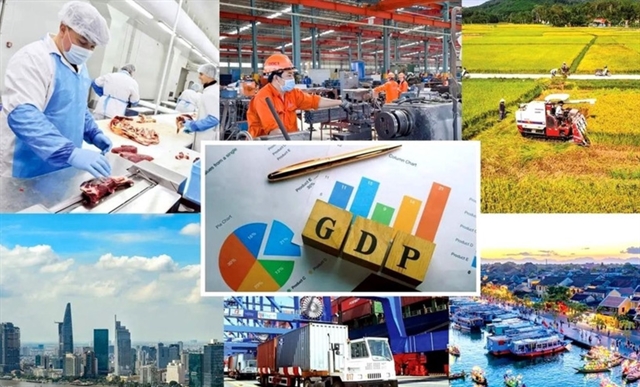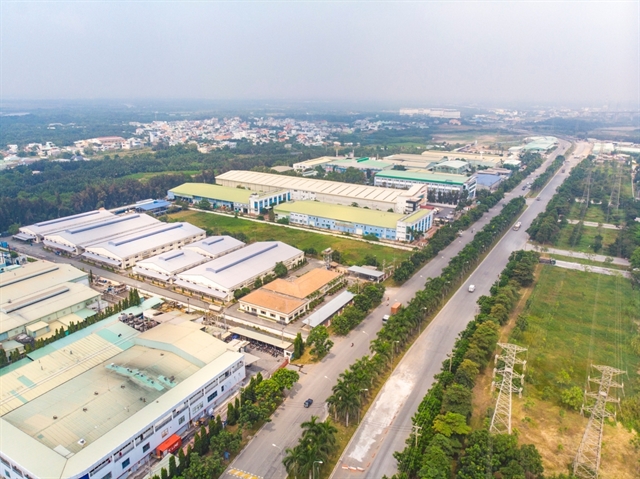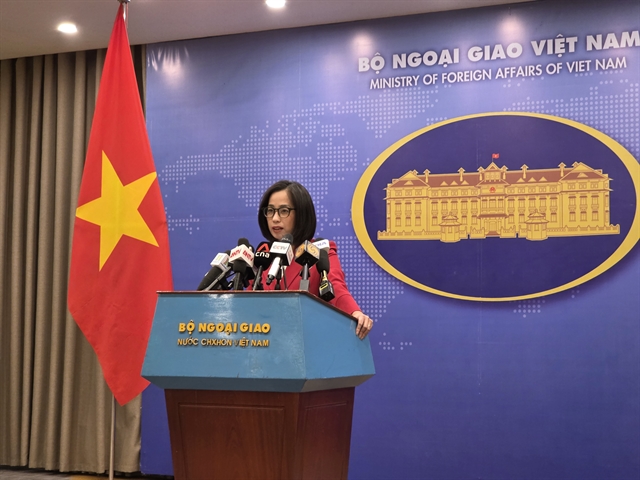 Economy
Economy


|
| Over the past four years, the average rental rates of industrial property grew at 7 per cent per annum in the North and 13 per cent in the South. Photo nhadautu.vn |
HÀ NỘI — Industrial property was a bright spot in the Việt Nam real estate market through the first half of this year, according to CBRE Việt Nam.
Under the Hà Nội real estate market insight in the second quarter of 2023 recently released by CBRE Việt Nam, net absorption of industrial land in Tier-1 markets reached 386ha and 397ha in the North and South, respectively. These figures are up by 60 per cent for the North and 20 per cent for the South compared to the same period of last year.
Industrial land rental rates sustained strong growth in both regions due to limited land ready for handover. Average rental rates for Tier-1 markets in the North and South reached US$127 per sqm and $187 per sqm, respectively. Over the past four years, the average rental rates grew at 7 per cent per annum in the North and 13 per cent in the South.
Ready-built warehouses (RBW) and ready-built factories (RBF) witnessed strong growth in supply. In the first six months of 2023, the total area of RBF and RBW completed in the Tier-1 market in both regions reached 900,000 sqm, 60 per cent of which was from the North.
The supply has grown at more than 20 per cent per annum in the North and 18-49 per cent per annum in the South over the past four years. As competition increases, the rental growth of these segments was at moderate levels staying at 2-3 per cent per annum during this period.
The Northern region continued to see strong demand from the electronics sector. During the first half of this year, the market recorded an expansion of big manufacturers such as Foxconn and Goertek in industrial parks in Bắc Giang and Bắc Ninh.
In addition, the strong expansion of Chinese manufacturers in various sectors also attributes to the good absorption of industrial land and RBF segment in the North.
Meanwhile, demand for the Southern market is diverse. Tenants from the automotive, garment and packaging industries were among the most active players looking for industrial land, RBF and RBW in the South.
The power supply in the North has been basically ensured since the end of June, but the alternating power cuts in some northern provinces have posed significant challenges to the manufacturing and export processing zones, according to Savills Việt Nam.
This could create a wave of investment in Tier-2 provinces, experts said, as tenants and investors seek investment opportunities and relocate production plants to other areas.
The development of renewable energy sources as well as infrastructure for renewable energy transmission have become more necessary than ever.
"The recent power cuts have severely impacted manufacturing operations in notable provinces in northern Vietnam. While some IPs have back-up power there is still a short-term concern of the potential frequency of cuts," said Thomas Rooney, senior manager of industrial services at Hà Nội branch, Savills Việt Nam.
"This could lead occupiers and investors into considering the new wave of attractive tier 2 provinces such as Vĩnh Phúc, Hà Nam, Thái Bình and Nam Định for their relocation and investment strategies."
The short to mid-term solution is to enhance backup power capabilities to higher standards to ensure no disruption of production, according to Rooney.
"Việt Nam has enormous renewable energy potential and is already one of the largest solar producers in the region. While the potential is great, grid infrastructure and administration remain an issue and are hindering the integration of renewables," he said.
Looking forward, industrial land rents are projected to grow at lower rates of 4-8 per cent pa after a strong growth period. Meanwhile, RBF/RBW segments might see mild rental growth of below 4 per cent over the next 12 months in both regions due to growing competition from new stock, according to CBRE Việt Nam.
Regarding future trends, Nguyễn Hoài An, senior director, Hà Nội branch, CBRE Việt Nam, shared “There have been more and more RBF/RBW and industrial parks developed in sustainable ways with green certificates."
"Although we haven’t seen clear evidence of rental premiums for green-certified industrial projects in Vietnam, we started to see tenants give higher priority to sustainable features and renewable energy, which will shape the future supply towards sustainability," said An.
More and more industrial projects in Việt Nam have registered and received LEED Green Construction Certificates. As of the second quarter of 2023, a series of industrial real estate projects have registered for LEED certification, such as Core5 in Hải Phòng, Logos in Bắc Ninh Province, RBW in Phú Tân Industrial Park in Bình Dương Province, and RBW in Xuyên Á Industrial Park in Long An Province.
Like other commercial sectors, sustainable development will also become a mandatory trend of industrial real estate. — VNS




